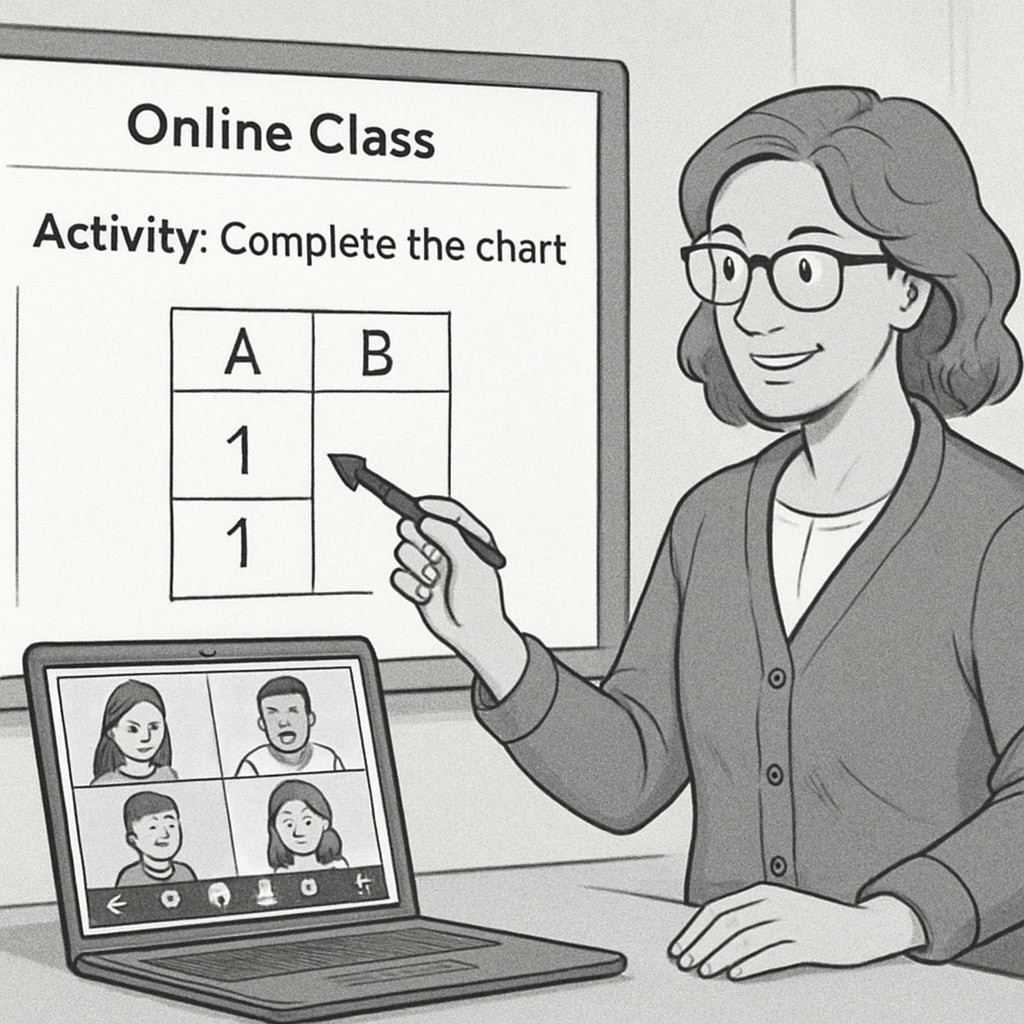The use of structured activities like Zoom, ReZoom, teaching activities, and answer sequences is transforming the landscape of K12 education. These interactive methods not only engage students but also foster deeper cognitive connections, making learning both fun and impactful. In this article, we’ll explore the benefits of Zoom and ReZoom activities, their application in the classroom, and strategies for effective implementation, especially in digital learning environments.
The Value of Zoom and ReZoom in K12 Education
Zoom and ReZoom activities are collaborative storytelling exercises where participants reconstruct a narrative or sequence by piecing together image cards or textual clues. These activities emphasize teamwork, critical thinking, and communication, which are integral to 21st-century skills development.
Zoom typically begins with a detailed image, and participants gradually “zoom out” to reveal a broader context, while ReZoom works in reverse, starting with a large scene and zooming in on smaller details. Both formats require students to work together to establish the correct answer sequence, fostering a sense of shared responsibility and accomplishment.
- Engagement: The visual and interactive nature of these activities stimulates curiosity and maintains focus.
- Cognitive Skills: Students practice sequencing, predicting, and synthesizing information.
- Collaboration: These exercises build communication and teamwork as students negotiate and share perspectives.

How to Organize Zoom and ReZoom Activities Effectively
Implementing these activities requires thoughtful planning and adaptability, especially in digital classrooms. Teachers can follow these steps to ensure success:
- Choose the Right Materials: Select images or story sequences that align with your lesson objectives. For instance, use historical events for history class or ecosystems for science.
- Divide Students into Teams: Small groups work best, as they encourage individual participation while avoiding overcrowding.
- Facilitate Communication: Provide guidelines for discussions, ensuring that every student contributes to the sequence-building process.
- Use Digital Tools: Platforms like Zoom or Google Classroom can host these activities using breakout rooms. Digital whiteboards or shared documents can display images or clues.
For example, in a remote learning environment, teachers can use a shared online presentation tool where each slide represents a “zoom level.” Students can collaborate to arrange the slides in the correct order while discussing their reasoning in breakout rooms.

Enhancing Student Participation Through Structured Interaction
One of the most significant benefits of Zoom and ReZoom activities is their ability to make learning a dynamic experience. Unlike traditional lectures or passive learning methods, these structured activities require active involvement, which leads to better retention and understanding of the material.
In addition, the answer sequence aspect challenges students to think critically about the relationships between different elements. This process not only sharpens their analytical skills but also helps them understand the importance of context in problem-solving. For example, a ReZoom activity on environmental conservation might start with a global view of climate change and zoom into individual actions like recycling or using renewable energy.
Practical Tips for Teachers:
- Provide Clear Instructions: Ensure that students understand the goal of the activity and the rules for collaboration.
- Encourage Reflection: After completing the activity, lead a discussion on what they learned and how they arrived at their conclusions.
- Adapt for Different Levels: Adjust the complexity of the materials based on the age and skill level of your students.
Zoom and ReZoom in the Digital Era
As education increasingly shifts toward digital platforms, activities like Zoom and ReZoom must evolve to fit virtual environments. The key lies in leveraging technology to maintain the interactive and collaborative essence of these exercises.
For example, teachers can use virtual breakout rooms for small group discussions and collaborative tools like Jamboard or Miro for sequencing images. Additionally, platforms like Kahoot or Quizlet can gamify the process, further enhancing engagement.
By integrating these tools, educators can ensure that activities remain accessible and effective, even in a remote setting. This adaptability highlights the enduring relevance of Zoom and ReZoom activities in modern education.
In conclusion, Zoom, ReZoom, teaching activities, and answer sequences provide a versatile and engaging way to enhance student learning. By fostering collaboration, critical thinking, and creativity, these activities prepare students for both academic and real-world challenges. Whether in a physical classroom or a digital environment, their structured yet flexible nature makes them a valuable addition to any educator’s toolkit.
Explore Further: For more information on collaborative learning strategies, check out Active Learning on Britannica or Educational Technology on Wikipedia.


